Coherent Noise Suppression Using Adaptive Homomorphic Filtering for Wideband Electromagnetic Imaging System
Abstract
1. Introduction
2. Preliminary Foundations
2.1. Feature Analysis of Coherent Noise
2.2. Selection of Parameters
3. Proposed Method
3.1. Adaptive Gaussian Filter
3.2. Description Length of and
3.3. Optimal Parameter Selection
4. Results and Discussion
4.1. Parameter Selection of the Adaptive Filter
4.2. Test on Simulated Images
4.3. Test on Experimental Images
5. Conclusions
Author Contributions
Funding
Conflicts of Interest
References
- Xie, S.; Wang, T.; Hao, X.; Yang, M.; Zhu, Y.; Li, Y. Localization and Frequency Identification of Large-Range Wide-band Electromagnetic Interference Sources in Electromagnetic Imaging System. Electronics 2019, 8, 499. [Google Scholar] [CrossRef]
- José, M.; Bioucas, D.; Mário, A.T.F. Multiplicative Noise Removal Using Variable Splitting and Constrained Optimization. IEEE Trans. Image Process. 2010, 7, 1720–1730. [Google Scholar]
- Jian, L.; Lixin, S.; Chen, X.; Yuesheng, X. Multiplicative noise removal in imaging: An exp-model and its fixed-point proximity algorithm. Appl. Comput. Harmonic Anal. 2016, 41, 518–539. [Google Scholar]
- Dong, J.; Han, Z.; Zhao, Y.; Wang, W.; Prochazka, A.; Chambers, J. Sparse Analysis Model Based Multiplicative Noise Removal with Enhanced Regularization. Signal Process. 2017, 137, 160–176. [Google Scholar] [CrossRef]
- Norashikin, Y.; Nidal, S.K.; Aamir, S.M. Subspace-Based Technique for Speckle Noise Reduction in SAR Images. IEEE Trans. Geosci. Remote Sens. 2014, 52, 6257–6271. [Google Scholar]
- Devanand, B. Additive And Multiplicative Noise Removal From Medical Images Using Bivariate Thresholding by Dual Tree Complex Wavelet Transform; Department of EEE Faculty of Engineering and Technology of Shri Shankaracharya Technical Campus: Bhilai, India, 2015. [Google Scholar]
- Charles, A.; Deledalle, C. MuLoG, or How to Apply Gaussian Denoisers to Multi-Channel SAR Speckle Reduction? IEEE Trans. Image Process. 2017, 26, 4389–4403. [Google Scholar]
- Weiying, Z.; Charles, A.D.; Loïc, D.; Henri, M.; Jean, M.N.; Florence, T. Ratio-based Multi-temporal SAR Images Denoising: RABASAR. IEEE Trans. Geosci. Remote Sens. 2019, 6, 3552–3565. [Google Scholar]
- Andra, N.K.; Svetlana, N.K. Apodization for improving the two-point resolution of coherent optical systems with defect of focus. Appl. Phys. B 2018, 124, 229. [Google Scholar]
- Goodman, J.W. Some effects of target-induced scintillation on optical radar performance. Proc. IEEE 1965, 53, 1688–1700. [Google Scholar] [CrossRef]
- Goodman, J.W. Statistical properties of laser speckle patterns. In Laser Speckle and Related Phenomena; Springer: Berlin, Heidelberg, 1975; Volume 9, pp. 9–75. [Google Scholar]
- Arsenault, H.H.; April, G. Properties of speckle integrated with a finite aperture and logarithmically transformed. J. Opt. Soc. Am. 1976, 66, 1160–1163. [Google Scholar] [CrossRef]
- Hansen, M.; Yu, B. Model Selection and the Principle of Minimum Description Length. J. Am. Stat. Assoc. 2001, 96, 746–774. [Google Scholar] [CrossRef]
- Giovani, G. Local Smoothness in Terms of Variance: The Adaptive Gaussian Filter. In Proceedings of the British Machine Vision Conference 2000, BMVC 2000, Bristol, UK, 11–14 September 2000. [Google Scholar]
- Chao, S.; Yuechan, L. Spherical Reverse Beamforming for Sound Source Localization Based on the Inverse Method. Sensors 2019, 19, 1–13. [Google Scholar]
- Aleksandar, N.; Ivana, R.; ZoranMi, C. Printed Antenna Arrays with High Side Lobe Suppression. Act. Passiv. Electron. Compon. 2008, 6, 1–6. [Google Scholar]
- Geng, S.; Yanheng, L.; Han, L.; Shuang, L.; Aimin, W.; Boyu, L. An Antenna Array Sidelobe Level Reduction Approach through Invasive Weed Optimization. Int. J. Antennas Propag. 2018, 4, 1–16. [Google Scholar]
- Randy, L.H. Optimized Element Spacing for Low Sidelobe Concentric Ring Arrays. IEEE Trans. Antennas Propag. 2008, 56, 266–268. [Google Scholar]

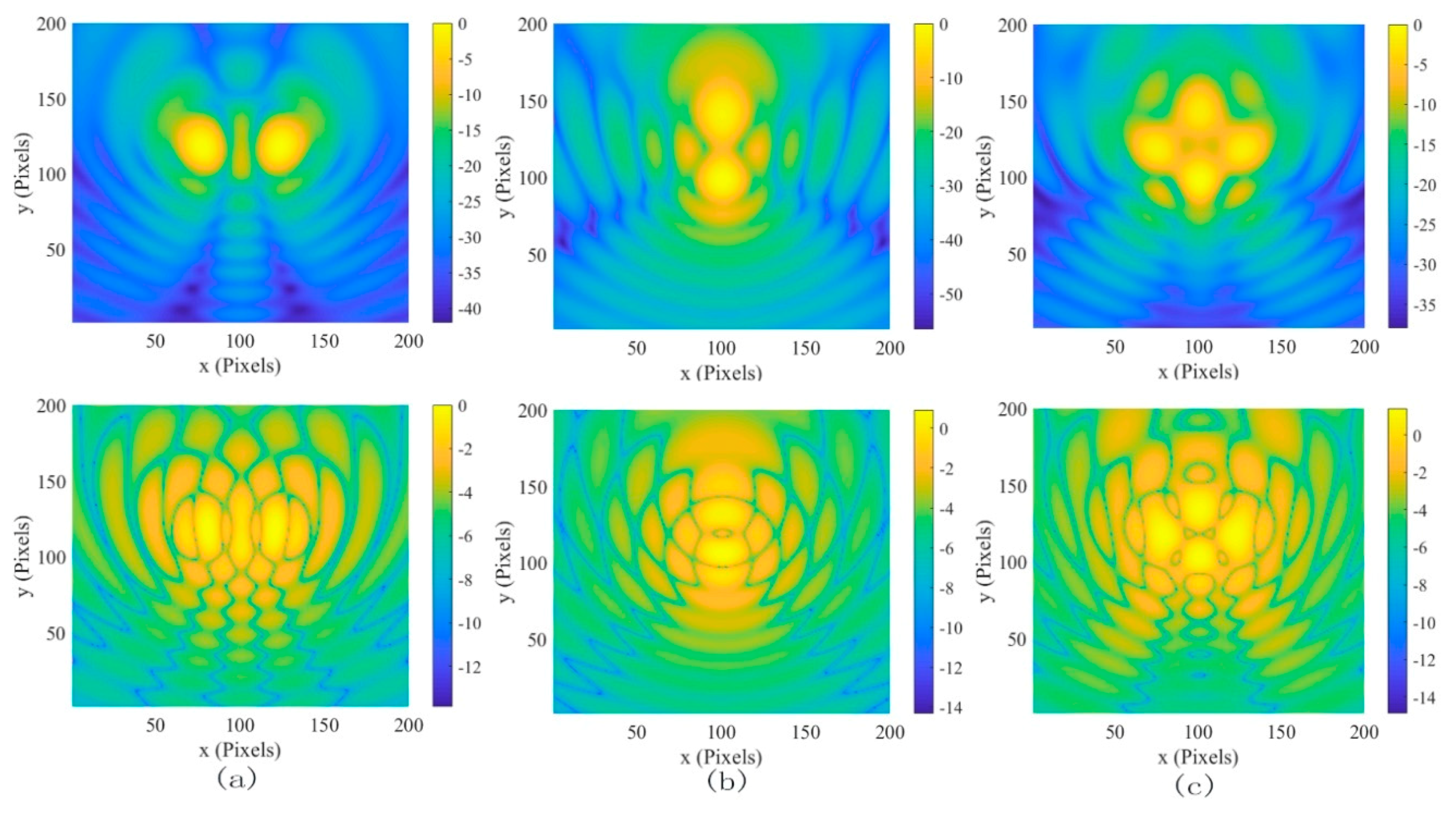
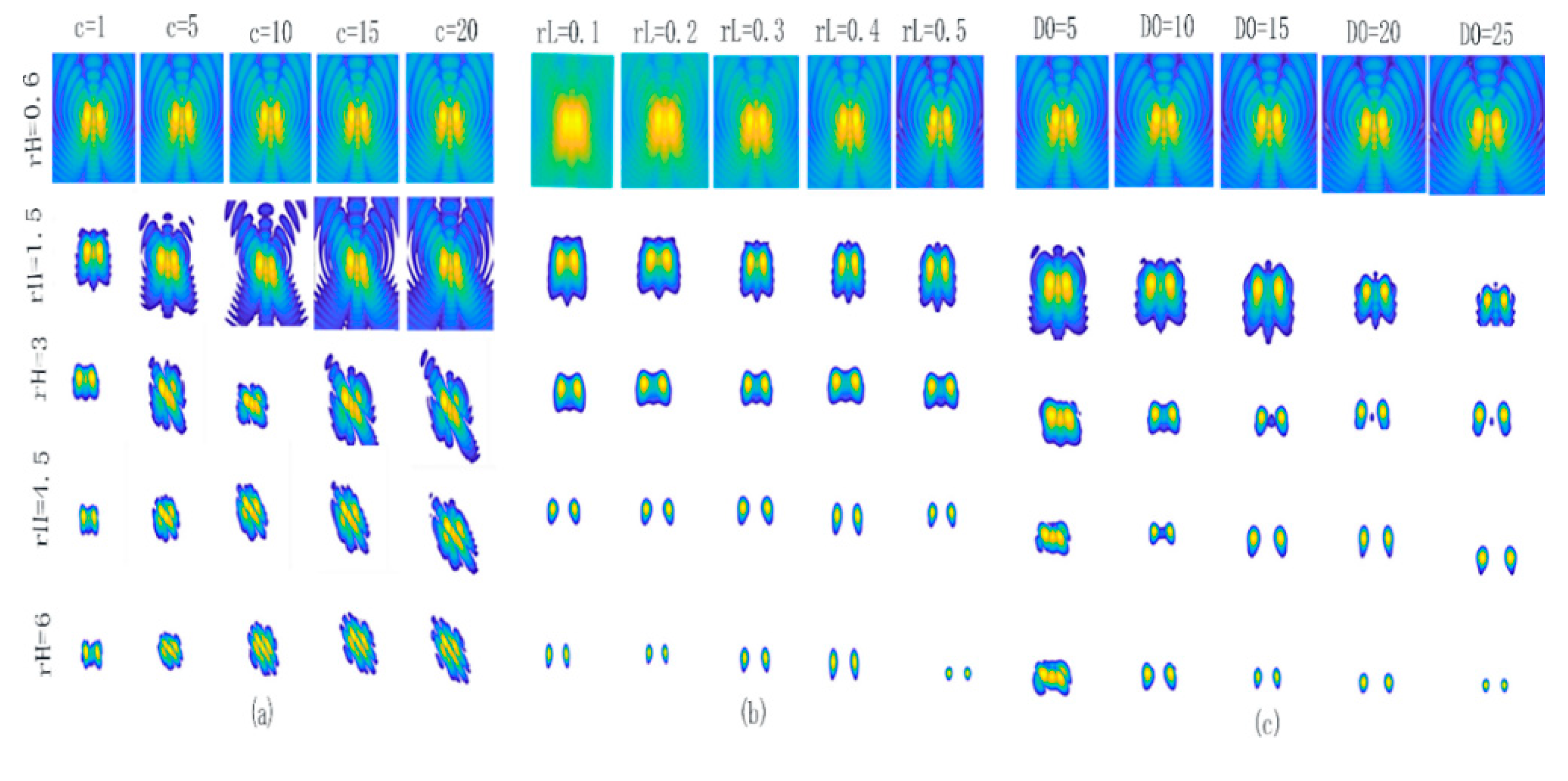

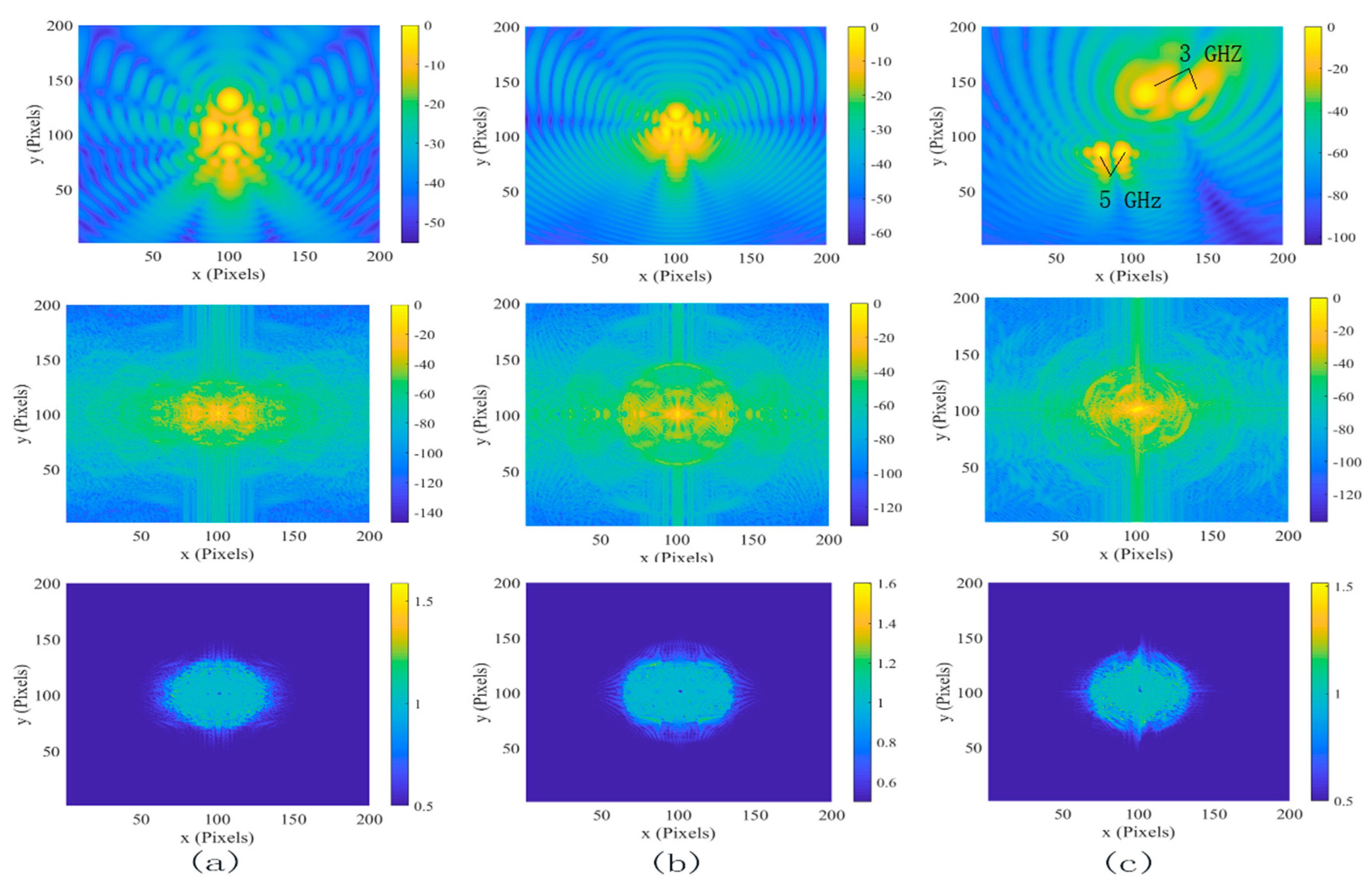

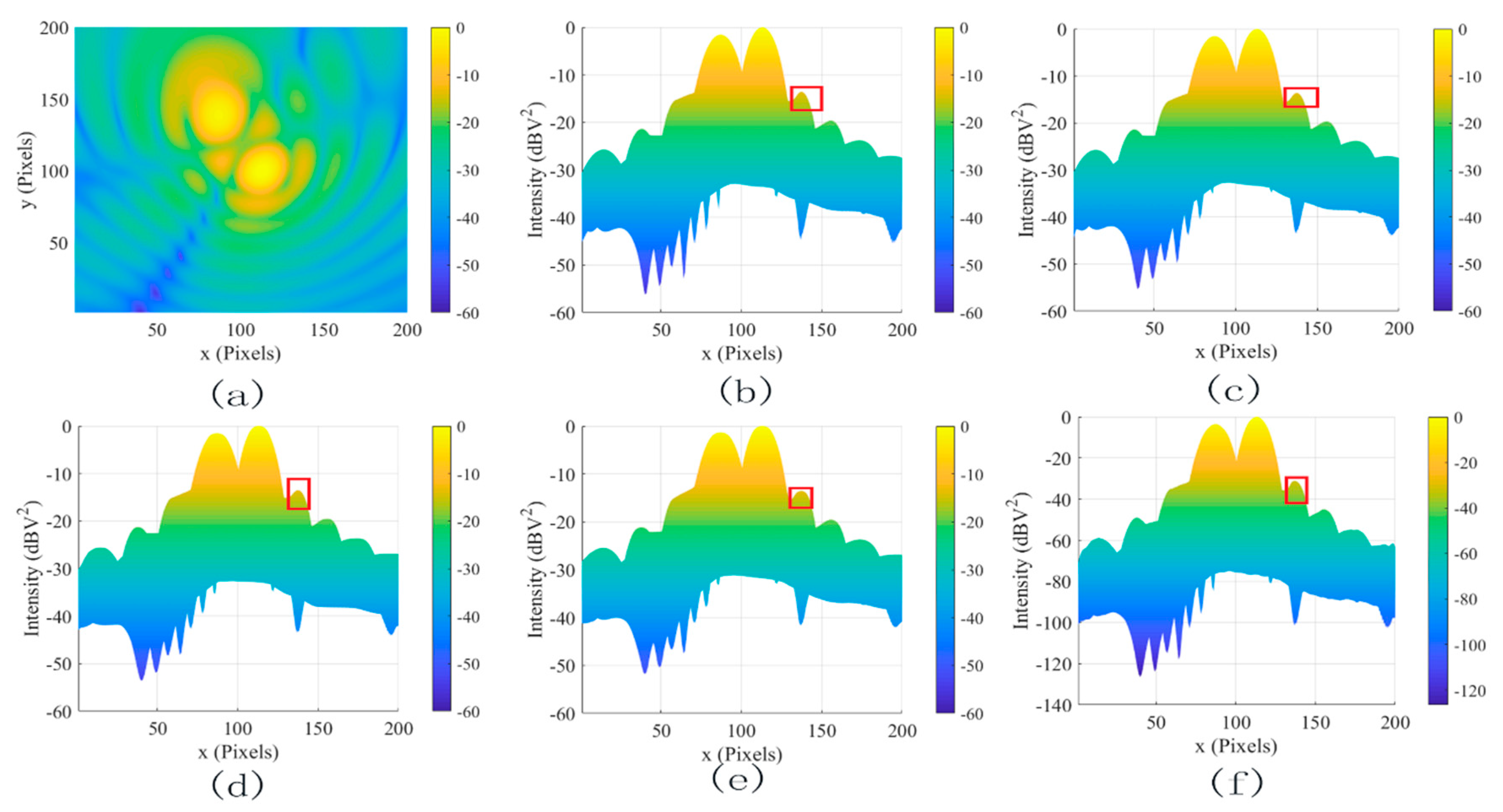

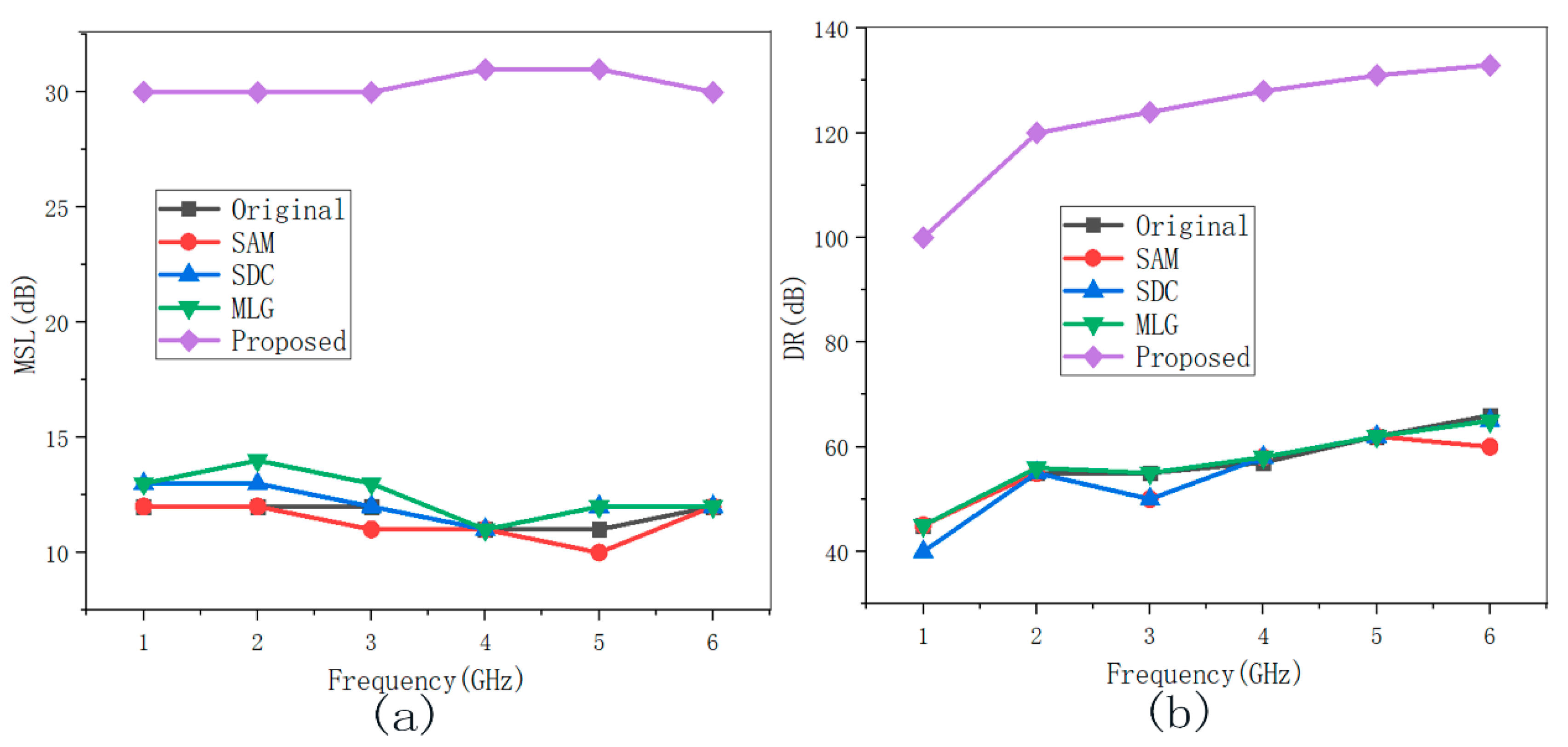



| Frequency (GHZ) | 2 | 4 | 6 |
|---|---|---|---|
| Original (dBv2) | −8 | −8 | −7 |
| Denoised (dBv2) | −19 | −21 | −20 |
| MSL (dB) | 8/19 | 8/21 | 7/20 |
| DR (dB) | 48/105 | 51/120 | 64/140 |
| Image Size | SAM | SDC | MLG | Proposed |
|---|---|---|---|---|
| 90 × 90 | 9.164 | 3.5 | 5.218 | 2.197 |
| 150 × 150 | 25.231 | 7.834 | 6.243 | 3.721 |
| 180 × 180 | 37.412 | 10.93 | 7.265 | 5.292 |
| 220 × 220 | 54.042 | 15.46 | 7.846 | 7.244 |
© 2019 by the authors. Licensee MDPI, Basel, Switzerland. This article is an open access article distributed under the terms and conditions of the Creative Commons Attribution (CC BY) license (http://creativecommons.org/licenses/by/4.0/).
Share and Cite
Zhu, Y.; Xie, S. Coherent Noise Suppression Using Adaptive Homomorphic Filtering for Wideband Electromagnetic Imaging System. Sensors 2019, 19, 4469. https://doi.org/10.3390/s19204469
Zhu Y, Xie S. Coherent Noise Suppression Using Adaptive Homomorphic Filtering for Wideband Electromagnetic Imaging System. Sensors. 2019; 19(20):4469. https://doi.org/10.3390/s19204469
Chicago/Turabian StyleZhu, Yanju, and Shuguo Xie. 2019. "Coherent Noise Suppression Using Adaptive Homomorphic Filtering for Wideband Electromagnetic Imaging System" Sensors 19, no. 20: 4469. https://doi.org/10.3390/s19204469
APA StyleZhu, Y., & Xie, S. (2019). Coherent Noise Suppression Using Adaptive Homomorphic Filtering for Wideband Electromagnetic Imaging System. Sensors, 19(20), 4469. https://doi.org/10.3390/s19204469





